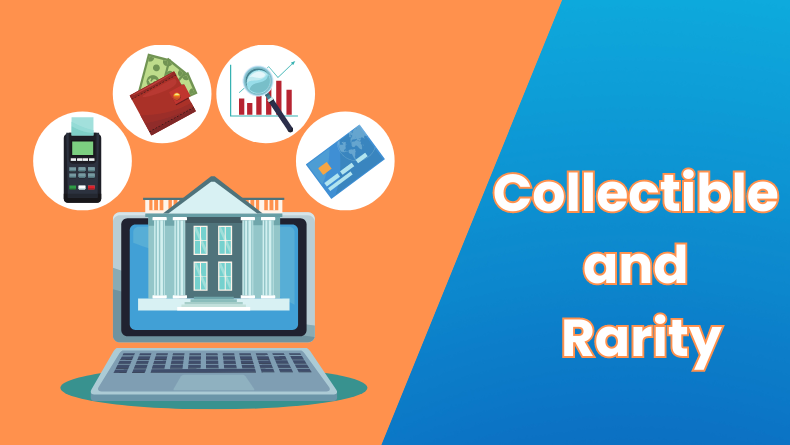In recent ages, the term “NFTs” has been the focus of a lot of discussion. NFT stands for Non-Fungible Token. NFTs are distinct digital assets that cannot be duplicated or traded one for one, in contrast to fungible cryptocurrencies like Bitcoin or Ethereum, where each unit is identical and may be swapped for another with the same value. Think of NFTs as digital certificates of authenticity or ownership. They are stored on a blockchain, which is a decentralized and transparent digital ledger, making it easy to verify the ownership and provenance of each NFT. In this blog, we‘ll discuss an ultimate guide to understanding NFTs.
How do NFTs work?
NFTs are created using blockchain technology, typically on platforms like Ethereum. Each NFT is identified by a special code that sets it apart from other assets. When we store this identity on the blockchain, it is conceivable for anyone to check the possession and transaction history of the NFT.
Films, digital art, music, collectibles, virtual real estate, in-game objects, and a wide variety of other digital and physical items can all be represented by NFTs. They suggest a safe and transparent means for producers and collectors to purchase, sell, and trade these special digital goods.
Importance of NFTs
Authenticity and Ownership
NFTs provide a way to prove the authenticity and ownership of a digital asset. Since each NFT has a unique identifier on the blockchain, it becomes easy to verify the original creator and the transaction history of the asset.
Value and Monetization
NFTs have given creators additional opportunities to monetize their digital works. Digital artists do not need the aid of distributors like galleries or auction houses to sell their work to amassers directly. The art market has enhanced as a result, and artists now have more grip over their works.
Collectability and Rarity
NFTs tap into the human desire to collect unique items. Collectors can own one-of-a-kind digital pieces, whether they are rare trading cards, virtual real estate, or iconic moments from sports or entertainment. The scarcity and exclusivity of these assets can drive up their value in the market.
Royalties And Onward Sale
NFTs can include smart contracts that allow creators to earn royalties from subsequent sales. This provides ongoing revenue streams for artists, musicians, and other content creators even after the initial sale of their NFT. Additionally, the ability to track and receive a percentage of future sales has reshaped the art market.
Benefits of NFTs:
Here we discussed the disadvantages of NFTs:
Authenticity and Ownership
The capability of NFTs to confirm the legality and ownership of digital assets is one of its most important features. Now that their work can be verified, artists, musicians, and other creators can avoid unlawful copying or plagiarism.
Monetization Opportunities
NFTs have revolutionized the way creators can monetize their digital works. By avoiding distributors, like galleries or auction houses, artists can sell their work directly to amassers. This enables creators to keep more grip over their work and receive a higher cut of the profits.
Collectible and Rarity

NFTs tap into the human desire for unique and scarce items. Collectors can own one-of-a-kind digital pieces, whether they are virtual trading cards, virtual real estate, or memorable moments from sports or entertainment. The exclusivity and rarity of these assets can drive up their market value.
Royalties and Resale Rights
NFTs can include smart contracts that enable creators to earn ongoing royalties. This means that when an NFT is resold by the original buyer, the creator can receive a percentage of the sale. This feature has transformed the art market, providing artists with a potential source of ongoing income.
Drawbacks of NFTs
Here are some drawbacks of NFTs:
Environmental Concerns
NFTs are mostly based on blockchain technology, which can use a lot of energy and harm the environment. This is a cause for concern because blockchain transactions, especially on platforms like Ethereum, demand a significant amount of energy. However, people are actively working to address these concerns and create blockchain solutions that are more sustainable.
Volatility and Speculation
NFT prices can be highly volatile, with some experiencing rapid fluctuations. Due to this volatility, both buyers and sellers run the risk of financial loss due to speculation. Before engaging in any transactions, it is crucial to approach NFT investments with caution and carry out careful study.
Potential for Copyright Infringement
While NFTs provide a way to verify ownership, they don’t inherently solve the issue of copyright infringement. In some cases, instances have arisen where individuals have tokenized unauthorized digital works as NFTs, resulting in controversy and legal consequences. Proper due diligence and copyright awareness are crucial in the NFT space.
Accessibility and Inclusivity
The current NFT market primarily focuses on high-value artwork and collectibles, potentially excluding artists and creators who cannot access or navigate these platforms. Furthermore, the cost of creating and trading NFTs, including transaction fees, can limit the participation of artists with limited financial resources.
Conclusion
NFTs are distinctive digital assets that are kept on a blockchain, enabling ownership verification and streamlining the purchasing, selling, and trading of digital works. They have offered new opportunities for both makers and collectors in the art, music, and collectibles industries. NFTs, though there is still much to learn about them, are unquestionably a fascinating development in the digital sphere. In conclusion, it provides a number of benefits, including the capacity to validate authenticity, prospects for monetization, collectability, and royalty rights. It is a cutting-edge new technology that has the power to fundamentally alter our understanding of value and ownership in the digital domain.


